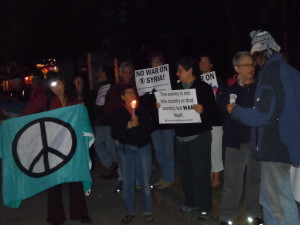Yes, We Fight the Same Battle Once Again—But I Have Hope
I saw “42” when it came out and liked it a lot.
It is hard to stay focused on changing the world when you look around and see not only the same battles all over again, but in many cases the same increasingly elderly activists joining those battles. For me, the wave of youth activism that started with Seattle in 1999 and crested with the Occupy movement–and will return when we least expect it—is very exciting, because it means there IS a critical mass for social change one and two generations younger than us.
I also avoid burnout by regularly thinking about all the areas where we HAVE made progress. And while police violence is an area that needs a LOT of work (since the 1960s, I haven’t understood why they reach for bullets instead of stun guns first), I think about what it was like for blacks in South Africa, Rhodesia, and the American South in my own lifetime…the way the environmental movement has gone from fringe to mainstream…the shattering of the idea common when I was a kid that the only appropriate careers for women were teaching and nursing and domestic work…the relatively new understanding that domestic violence and hate speech and school bullying are crimes we don’t have to tolerate…the string of fallen-dictator dominoes around the world, from throwing off the shackles of colonialism in Africa to the Arab Spring. (We may not always find the replacement governments an improvement, but the truth is, when the people say ENOUGH, governments topple and there is a brief space for something better. Once in a while, as in Mandela’s South Africa, that better thing actually emerges victorious.)
In other words, I look around and I see that within the brief span of my own lifetime (I turn 58 on Wednesday), we’ve made very real change on many fronts, even if it feels like we’re running in place or even backsliding.
These are what gives me hope and keeps me working for peace, justice, and the planet.
The above is my response to a friend posting her response to the movie, “42,” about Jackie Robinson and the integration of baseball. She wrote,
Black Lives Mattered in that struggle against racism in baseball–perhaps the beginning of the civil rights movement…Sixty years later, same struggle. Oh, God help us win this time ’round. Does the arc of justice bend?

